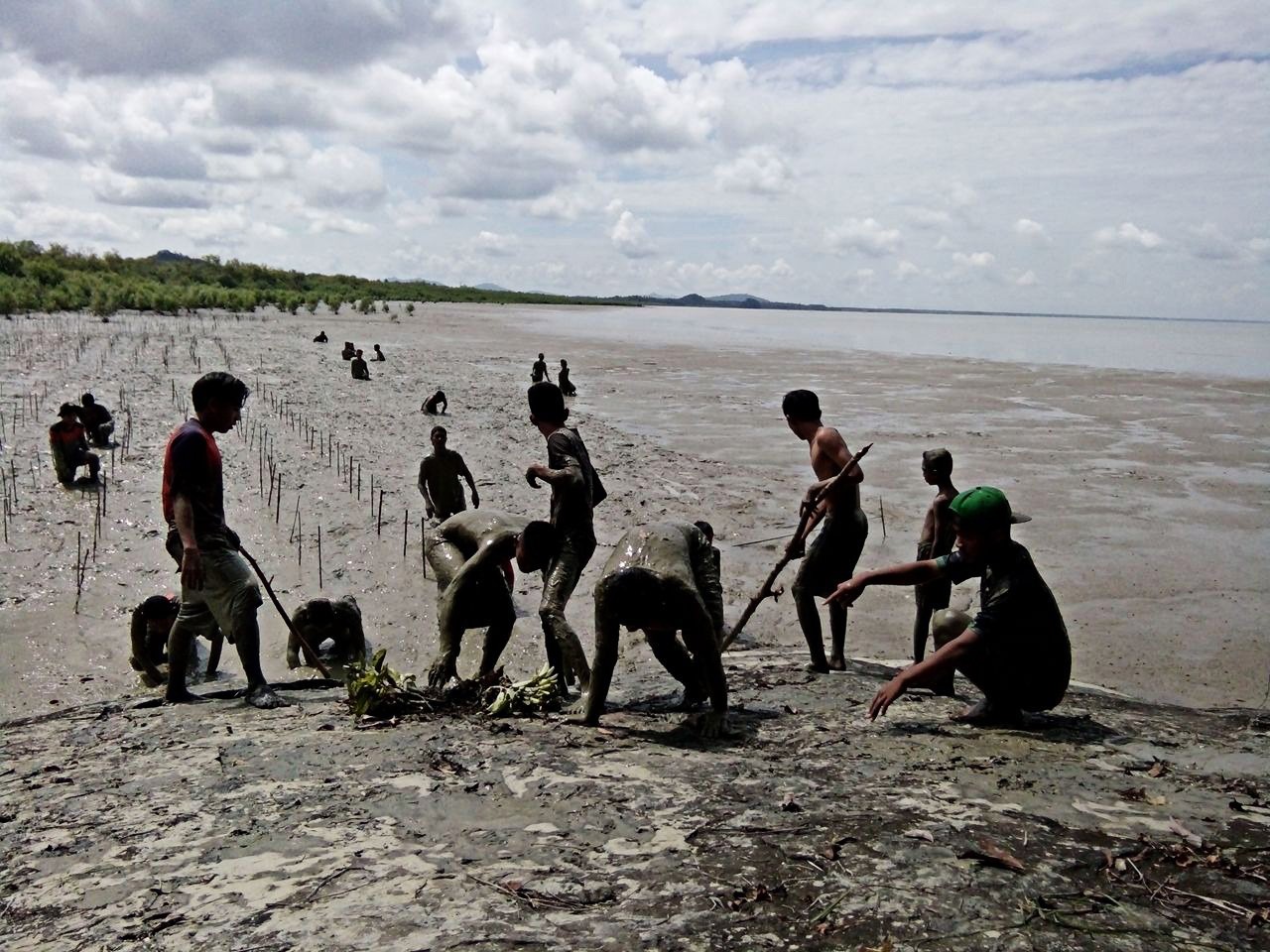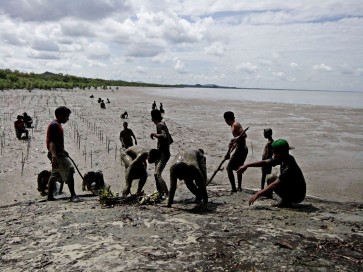Popular Reads
Top Results
Can't find what you're looking for?
View all search resultsPopular Reads
Top Results
Can't find what you're looking for?
View all search resultsIndonesia tries to adapt to coastal erosion
The ministry has constructed a total of 29 kilometers of hybrid structures to shield its coastlines since 2017.
Change text size
Gift Premium Articles
to Anyone
A
s the country is losing coastal areas to erosion, the government of the world’s largest archipelagic nation is working to stop it from getting worse, using both soft innovations and the construction of concrete-based structures.
Coastal erosion is a natural phenomenon that occurs in coastal areas where land along a coastline is lost to the ocean usually because of wave and wind action. In ideal conditions, another process known as accretion should replace the displaced land by the same amount of sediment eroded from other areas.
Lately, the erosion across the country has been worsening because of the rampant cutting of mangrove trees, which serve as natural protection for coastal areas. The plant is also known for its role in assisting the accretion process by trapping sediment; therefore, its absence has been preventing sedimentation from occurring.
Acknowledging that replanting mangroves would take a long time to succeed, the Maritime Affairs and Fisheries Ministry is working on several innovations to recover the eroded coastlines.
“We try to recreate the mangrove’s function of trapping sediment by erecting what we call 'hybrid engineering' structures,” the head of the Maritime Affairs and Fishery Ministry’s coastal disaster mitigation section, Abdul Muhari, told The Jakarta Post.
The permeable structure — two parallel bamboo fences with the space between them filled by twigs — works as a sediment trap to catch mud brought by the tide, rather than as a breakwater to hold off waves from hitting the beach. It is installed in the water several meters from the coastline.
“This is in line with the ministry’s principle of building with nature: We use local materials and use a natural phenomenon to recover the land,” Abdul said.


















